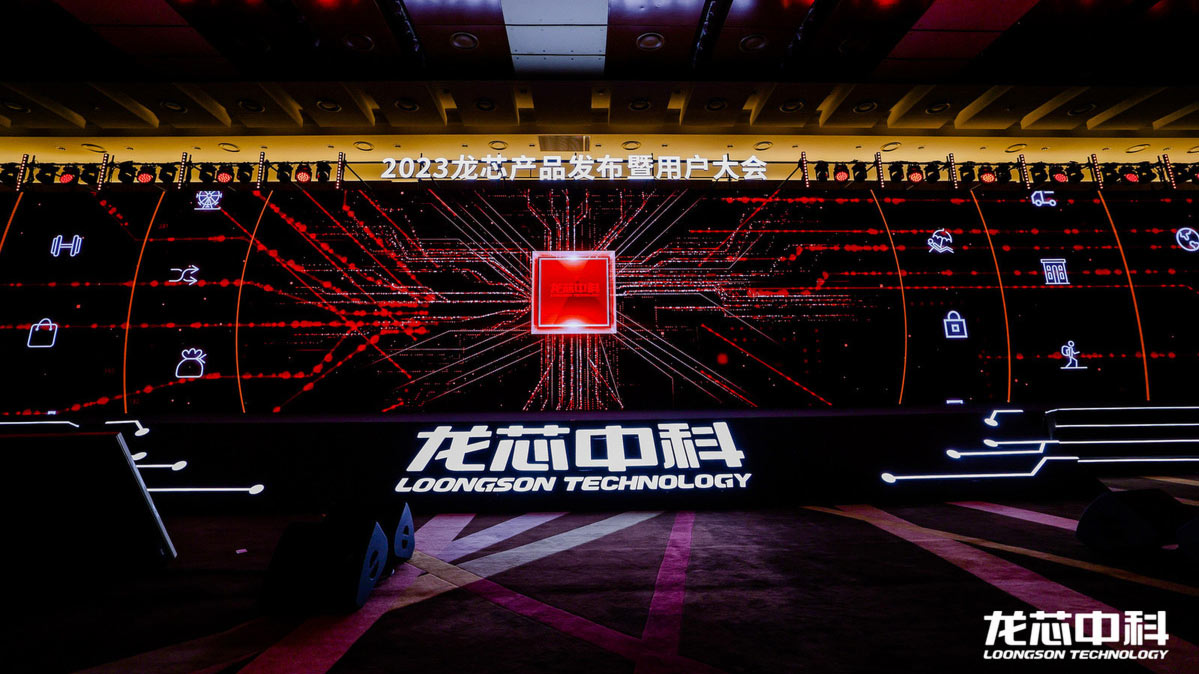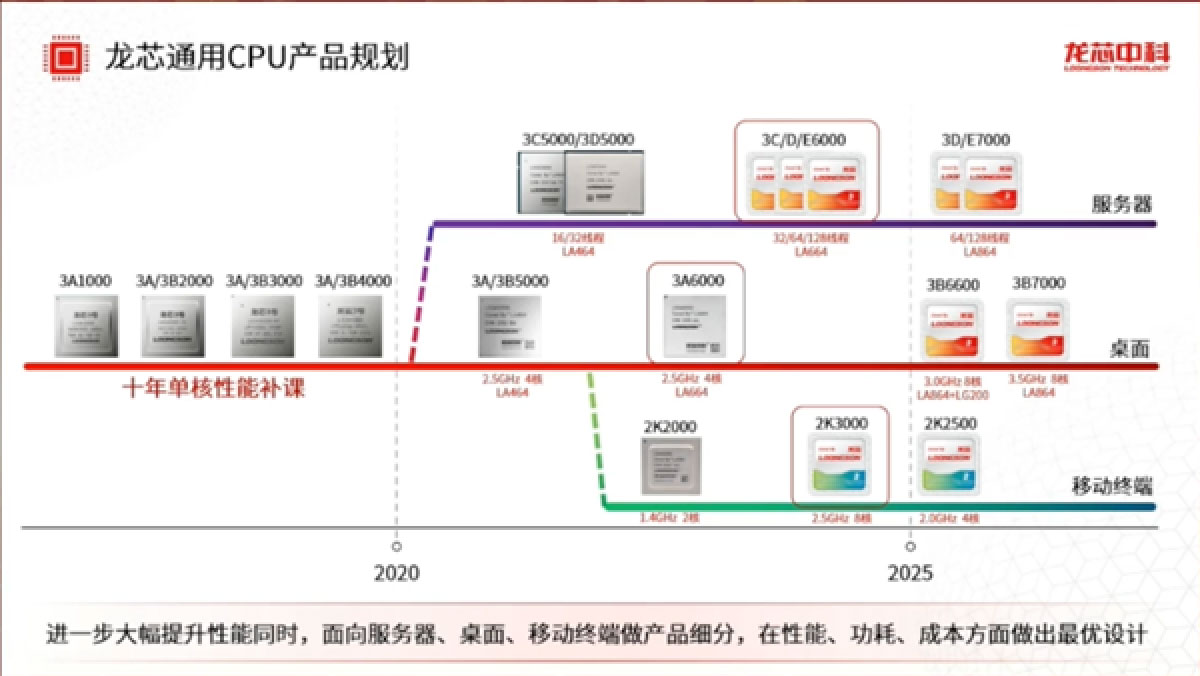
Loongson is one of the few CPU developers from China not expected to be directly hit by U.S. sanctions. It uses the MIPS-originated LoongArch instruction set architecture (ISA) and employs a China-based foundry to make its chips. This is perhaps why Loongson has quite an ambitious roadmap that spans across markets and includes datacenter CPUs with up to 128 cores, according to slides published by EE Times China.

Loongson's CPU product roadmap until 2025 outlines an ambitious plan to improve performance and expand market reach across desktops, laptops, and servers. As expected, the company aims to enhance single-core/single-thread performance, develop up 128-core server CPUs, and introduce energy-efficient mobile processors to compete with AMD and Intel in client PCs.
The roadmap describes desktop CPUs, starting from the 3A1000 series and advancing to the 3A5000 and 3B5000 series between 2020 and 2022. Significant improvements are marked by the introduction of the 3A6000-series for client PCs in 2023, which operates at clock speeds between 2.5 GHz and 4.0 GHz using the LA464 architecture, an alleged Loongson ISA. These CPUs aim to offer performance akin to that of Intel's 10th generation Core processors, according to the story.
When it comes to server-class CPUs, things are getting more interesting. The 3C/D/E6000 series processors are set to be launched by 2025, featuring up to 128 cores. This is the pinnacle of Loongson's server CPU development, and we also know that this 128-core product is based on multiple chiplets, another major development for China's semiconductor industry.
In the laptop CPU segment, Loongson has its 2K series, starting with the 2K2000 (for now) and progressing to the 2K3000 and 2K5000 by 2025. These CPUs are designed for energy efficiency, but Loongson does not really go beyond that.
In the meantime, Loongson's roadmap highlights Loongson's strategic focus on catching up with multinational CPU developers and their performance standards (e.g., AMD, Apple, Arm, Intel), aiming for significant improvements in single-core performance over the decade.
Loongson's roadmap clearly illustrates the company's commitment to its own progress in particular and perhaps China's technological self-sufficiency in general, particularly important in the context of geopolitical tensions and trade restrictions. The use of the proprietary LoongArch architecture represents a significant step towards reducing reliance on foreign technologies and enhancing domestic capabilities. However, production at SMIC may be a whole different story.







